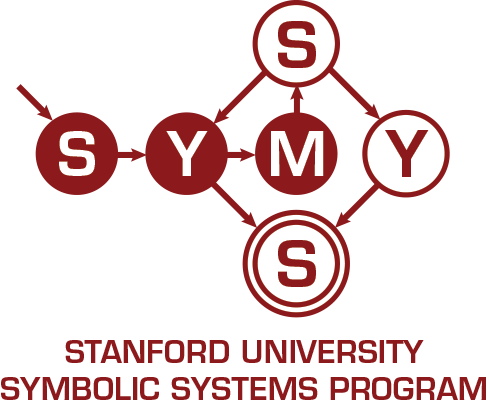
The Symbolic Systems Program (SSP) at Stanford University focuses on computers and minds: artificial and natural systems that use symbols to communicate, and to represent information. SSP brings together students and faculty interested in different aspects of the human-computer relationship, including...
- cognitive science: studying human intelligence, natural languages, and the brain as computational processes;
- artificial intelligence: endowing computers with human-like behavior and understanding; and
- human-computer interaction: designing computer software and interfaces that work well with human users.
Symbolic Systems' affiliated faculty come from several
departments at Stanford, including Computer Science, Linguistics,
Philosophy,
Psychology, Communication,
Statistics,
and Education. Our students
are exposed to the tools of these disciplines -- formal
methods, philosophical analysis, computer programming,
and empirical research -- with the aim of being able to
apply the appropriate tool(s) to a chosen area of
specialization. SSP alumni are found in various
occupations, including software design and applications,
teaching and research, law, medicine, and public
service.
If you had an account on the old Symsys site: You can log in under the "Deme Account" option using your old username and password. If you don't remember your username and/or password, email davies at stanford edu.
What's New in Symbolic Systems?
The initial list of courses fulfilling the undergraduate major's Advanced Small Seminar Requirement in 2015-2016 has been posted. Watch it for updates as new courses are approved.
NOTE that course description links will not link to the 2015-2016 course listings until August 1st, 2015.
Full Article
Office hours for the Symbolic Systems Advising Fellows and Program Administrators will resume for Autumn Quarter beginning on September 21, 2015. If you are viewing this in the newsroll, click "Full Article" to see the complete list of office hours. Watch here for updates.
- Avi Bagla ('16, Human-Computer Interaction), AF ...
Full Article

 Welcome!
Welcome!